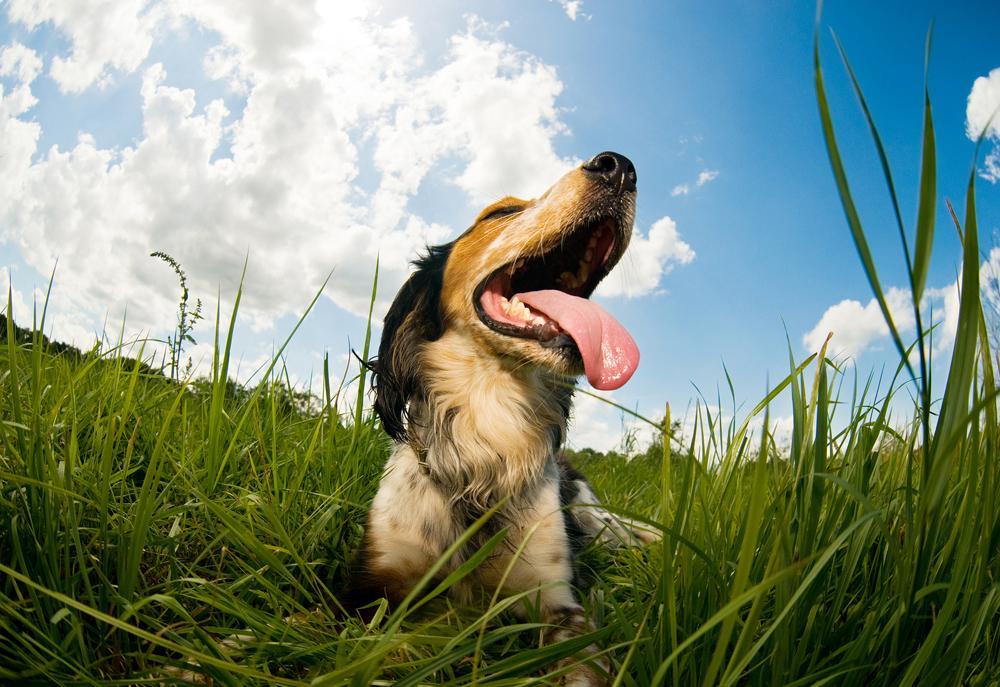 Living in Queensland, we all know how hot it can really get. Whether you’re out working in the yard or sitting in the shade, sometimes the heat just gets too much! Luckily for humans, our bodies will sweat, to help regulate our body temperature, plus we can usually get away from the heat by sneaking into the Air Conditioning or turning on the fan.
Living in Queensland, we all know how hot it can really get. Whether you’re out working in the yard or sitting in the shade, sometimes the heat just gets too much! Luckily for humans, our bodies will sweat, to help regulate our body temperature, plus we can usually get away from the heat by sneaking into the Air Conditioning or turning on the fan.
Unfortunately for our dogs and cats, they are unable to dispel heat from their bodies through sweat glands like us. Instead they release heat primarily by panting and they sweat through the foot pads and nose. If a dog or cat cannot effectively expel heat, their internal body temperature begins to rise. When an animal is exposed to high temperatures, hyperthermia may result. Hyperthermia is a term describing an elevation in body temperature, also known as heat stroke or heat exhaustion. Heat stroke is a very serious condition that requires immediate medical attention. Once the signs of heat stroke are detected, there is little time before serious damage – or even death – can occur. Once a pet’s temperature reaches 41°, damage to the body’s cellular system and organs may become irreversible. Unfortunately, too many animals succumb to heat stroke when it could have been avoided.

Below are some signs of heat stroke that you can look out for, especially in the summer months;
Dogs
• Vigorous Panting
• Dark Red Gums
• Tacky or Dry Mucous Membranes (specifically the gums)
• Lying down and unwilling (or unable) to get up
• Collapse and/or loss of consciousness
• Thick saliva
• Dizziness or disorientation

Cats
• Panting
• Sweaty Paw Pads
• Restless
• Over grooming
• Vomiting
• Lethargy
• Rapid pulse
• Stumbling
Heat stroke can occur in Queensland even in the winter months, depending on the circumstances of which your pet is put in. Fortunately there are several ways that you can help to prevent heat stroke from occurring:
• Do not leave your pet in a hot car, even if you have the windows open, the temperature inside a vehicle can rise to dangerous levels in a matter of minutes.
• Avoid leaving your dog in an area of the yard that has no access to shade or water; do not tie your dog up in the sun.
• Avoid vigorous exercise on warm days and avoid exercising in the middle of the day when the heat is at its worst.
• Ensure there is always cool fresh water available for your pets at all times.
• Certain types of dogs are more sensitive to the heat – especially obese dogs and brachycephalic (short-nose) breeds ie. Pugs and Bulldogs. Use extreme caution when these dogs are exposed to heat.
• Certain cats are also more sensitive to the heat, obese cats, brachycephalic breeds such as Persians or exotic cats and felines with kidney disease or asthma.
• If possible, leaving your pets inside with the fan or air conditioning on will help to keep them cool if you are away for long hours during the day.

If you have even the slightest suspicion that your pet is suffering from heat stroke, you must take immediate action.
• First, move your pet out of the heat and away from the sun right away.
• Begin cooling your pet by placing cool, wet rags or washcloths on the body – especially the foot pads and around the head.
• DO NOT use ice or cold water! Extreme cold can cause the blood vessels to constrict, preventing the body’s core from cooling and actually causing the internal temperature to further rise. In addition, over-cooling can cause hypothermia, introducing a multitude of new problems.
• Offer your pet cool water, but do not force water into your pet’s mouth.
• Call or visit your vet right away. Internal damage might not be obvious to the naked eye, so an examination is necessary (and further testing may be recommended).
Tip: recruit others to help you – ask someone to call the vet while others help you cool your pet.
Some animals will recover fully from heat stroke if it is caught and treated early enough. Others may suffer permanent organ damage and require lifelong treatment. Sadly, many pets do not survive heat stroke. Prevention is key to keeping your pets safe during warmer weather.
